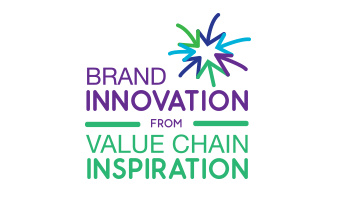
How New Marketing Production Technologies and Creative Supply Chain Partners Impact Go-to-Market Strategies and Outcomes
Go-to-market is a business-critical, highly complex and carefully sequenced process for global brands today. However, there can be multiple points of disruption, distress and deficiency in this multi-function model, which is essential to value creation and competitive advantage for any consumer or business marketer.
Effective orchestration of product launches and marketing campaigns across the entire sales, distribution, merchandising and customer support repertoire requires significant logistical, technological and operational expertise. This involves new skills, insights, resources, warehousing footprints and analytics to optimize demand-side planning, procurement, production, storage and just-in-time provisioning of critical marketing support, product packaging, merchandising and order fulfillment requirements.
Campaign success is often contingent on the marketing ecosystem’s ability to deliver on six critical areas of go-to-market proficiency, all of which are highly data-driven, digitally enabled and outcome-focused. They include:
- Product and packaging innovation
- Creative relevance and resonance
- Marketing production effectiveness
- Supply chain/OEM partner efficiency and accountability
- Demand chain/channel performance
- Omni-channel execution consistency
Evaluating and optimizing go-to-market performance has become the new imperative for agile and adaptive organizations seeking to improve sales effectiveness, product appeal, customer acquisition and retention, point-of-sale or service experience, after-sales satisfaction, and corporate commitment to sustainability.This requires a tighter linkage and closer collaboration with marketing production, printing, creative supply chain, and OEM technology and supplier partners to better utilize assets, optimize marketing execution and ensure brand compliance. CMOs need inspiration and guidance from these resources to understand and leverage:
- New data-driven approaches to mass personalization of content and communication
- Adept use of on-demand print and imaging systems that improve quality and sustainability
- Creative versioning of content at scale to deliver production-ready files across borders
- Innovations in dimensional marketing, smart merchandising and multi-channel engagement
- Packaging advances that differentiate brands, increase product consumption, and make it easier to handle, recycle or re-use containers
- Breakthroughs in material science and multi-service reproduction for more arresting signage and branding
- Brand logistics management to improve demand chain provisioning, reduce transportation and storage costs, and minimize obsolescence
Marketing Supply Chain Deficiencies
Nearly two-thirds of senior marketers have never undertaken a comprehensive audit of the costs and processes that contribute to their marketing supply chain, and most admit their resources and suppliers are poorly integrated across global networks, reports the CMO Council’s Marketing Supply Chain Institute.
An online audit of more than 300 senior marketers conducted by the CMO Council found that most are inadequately positioned to introduce new efficiencies and waste reduction programs into their marketing ecosystems. The milestone “Define Where to Streamline” study is part of ongoing authority leadership program under the umbrella of the CMO Council’s Marketing Supply Chain Institute. This best-practice advocacy group is dedicated to improving marketing logistics, operational economics, ecosystem management and procurement in the $1.5 trillion marketing services sector.
The "Define Where to Streamline" report provides a comprehensive assessment of how well marketers are managing, controlling and introducing sustainability practices across increasingly complex global supply chains. These include hundreds or thousands of printers, exhibit and merchandise suppliers, warehouse and fulfillment operations, communications agencies, media channels, independent contractors, as well as creative and service providers.
The study revealed that just 25.2 percent of marketers have undertaken a comprehensive audit and analysis of costs and process efficiencies in their supply chain, and roughly the same number—25.9 percent—track obsolescence on marketing and event management consumables. These numbers reflect a lack of visibility into marketing supply chain operations and poor tracking and accountability of marketing materials and merchandise inventory, which often involve millions of printed items, including product packaging, corporate brochures, sales literature, premiums and point-of-sale display units.
Go-to-Market Improvements
With markets becoming more fragmented, segmented and complex, marketers have many more elements to manage and a real need to track campaign performance, value and ROI. They need to automate critical campaign execution functions and further empower partners with on-demand, self-service access to marketing assets, insights, opportunities and sales support components. In addition, they have to better manage market development funds, contain costs, and track the impact of cooperative campaigns on both demand generation and sell-through.
New creative adaptation and repurposing platforms and services are enabling national or regional marketers to cost-effectively produce, package, distribute and repurpose more relevant, targeted, and pertinent content to better engage and support diverse audiences and channel partners worldwide. Iterating a brand’s creative inspiration and output at scale to better resonate with cross-cultural consumers and diverse audiences on a local level is a new global mandate for CMOs. It is enabling them to truly localize and customize creative executions, packaging, collateral, advertising and communications by culture, affinity, language and location to accommodate factors such as climate, geography, ethnic composition, demographics, shopper-graphics, psychographics, politics and even neuro-sensory influences.
Cross-border localization demands are requiring vendors to be more adept and efficient in teaming with partners in the go-to-market process. They must now create, translate, customize, modify and deliver integrated marketing campaign content across multiple formats (print, web, mobile, eMedia, video, audio), media channels and audience types.
A significant percentage of marketing spend is allocated for media advertising, trade shows and events, as well as physical goods such as packaging, documentation, sales collaterals, catalogs, premiums, signage and channel merchandising materials, which frequently have to produced in large volumes, warehoused and shipped globally contributing to a company’s carbon footprint. The advent of global print on-demand service providers, end-to-end marketing supply chain management systems, marketing process integrators, marketing supplier management modules and global sourcing platforms for talent, print production, creative services and tactical marketing support are leading to greater marketing performance, accountability, yield and operational visibility.
This program—conducted in partnership with NPES—aims to gain insights into how chief marketers view the criticality of production, printing and dimensional marketing investments (consumables, collateral, signage, displays, packaging, etc.) to customer acquisition, conversion and retention, as well as how they plan to allocate spend in this area in going forward. Qualitative and quantitative research will explore best practices and assess how CMOs rate the effectiveness of their go-to-market process and the value of demand chain provisioning relative to print, creative and graphics communications services (from in-house and external resources. An Elite Retreat will also be hosted in October 2017 in Scottsdale, Arizona. Stay tuned for additional details.
Program Elements and Content
Sponsors

The Association for Print Technologies (APTech) is a purpose-driven organization dedicated to supporting the entire commercial printing value chain. We believe in helping our members maximize alignment with their value chain partners to be more effective and competitive. Printing has been vital to communication for decades, and today, the digital culture has heightened our industry's complexity and reframed its relevance. APTech's signature event—PRINT—answers the call by bringing the boldest and brightest innovators, influencers and newest technology together to create connections that showcase and advance our industry. For complete information about the association, its programs and its member companies, call (703) 264-7200 or visit www.PrintTechnologies.org






